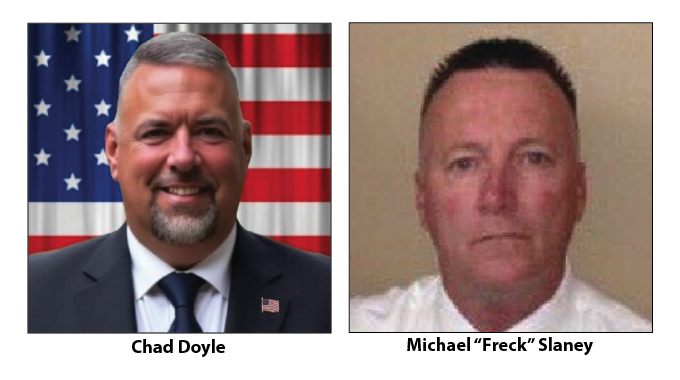Project Cypress not a done deal yet
Published 12:12 pm Thursday, November 9, 2023
Project Cypress — a facility designed to capture carbon from the atmosphere and store it underground — does not have the greenlight to build in west Calcasieu Parish, despite a news release issued by the U.S. Department of Energy in August that announced funding “to advance the development of a commercial-scale direct air carbon capture facility in Southwest Louisiana.”
That’s because, at this point, “negotiations are active and ongoing,” according to Marcela Mulholland of the Office of Clean Energy Demonstrations.
The DOE will fund 50 percent of the project — $600 million dollars — and investors will pick up the other half if the project funding award goes forward.
Trending
Mulholland and other OCED representatives were in Sulphur this week for the first public briefing about the project to introduce highlights of the Community Benefits Plan as an integral part of the selection process and to allow for questions. “Community input will be used to help shape not only this project, but an entire industry. Your community and your voice can be a part of that,” she said.
OCED staffers acknowledged the briefing was originally scheduled and rescheduled in September. After hearing from the public, they said, the date was moved to Nov. 7.
“If things go as planned, we will have the world’s first working direct air capture project in the United States,” said Shawn Bennett, energy and resilience division manager for Battelle, a team company leader of the three companies that make up Project Cypress. It would remove one million metric tonnes from the atmosphere, the equivalent of emissions from 222,500 gasoline-powered cars each year.
“That’s not small,” he said.
In addition to OCED representatives, Bennett and representatives from Climeworks and Heirloom were at the meeting to field questions.
Bennet said the carbon dioxide would be stored in sandstone, not in salt domes. He didn’t do a deep dive on the technology, only to say that specialized filters will be used and a complementary technology using limestone, which acts as a sponge.
Trending
“This community event here tonight is just the first of many conversations,” Bennett said. “We’re not here to shake things up. We’re here to be part of the community. Sometimes you hear announcements and there’s already construction crews on site. That’s not happening here.”
A representative from the National Environmental Law Center asked if Project Cypress would pursue property tax exemptions. She was told that because the project was still in planning stages, that could not be a commitment at this time, but it could be integrated into future conversation.
One participant asked for the definition of environmental racism, and a representative from Climeworks said environmental racism has produced so many terrible outcomes in communities, all its stories have yet to be told.
“I will be very clear with you,” he said. “Even if we make good on that tax question (exemptions), that’s not going to solve it (the problems caused by environmental racism in the past). But what we can do, m’am, and everyone here is committed to is showcasing to all of the people in this room that investments are structured in a way that gives us the chance to turn the page.”
Two members of the audience expressed opinions that the federal government should use the funding on a new Lake Charles bridge or to mitigate more pressing problems including hunger and housing because the technology is not proven on a larger scale (that’s the emphasis of the project) and only a fraction of carbon would be removed from the atmosphere.
Meeting experts acknowledged that capturing a million metric tons of carbon dioxide from the atmosphere is not enough. “If we really want to make a difference, we have to capture carbon at a much higher scale. This is the first commercial deployment. It’s just a start. One million tons is where we have to begin.”
“OCED is part of a new frontier of offices at the Department of Energy that requires community benefit plans,” said Julia Jeaty. “I personally am committed to strong two-way community engagement with stakeholders like you, to understand your perspective and collect insights that will inform how we meet our mission.”
She acknowledged that past infrastructure projects really haven’t been inclusive of community voices and perspectives and the meeting was just one way to demonstrate the DOE’s commitment to doing things differently, not just mitigating any risks that are potentially associated with these projects but maximizing local impact.
OCED requires all funding opportunity applicants to create and, if awarded funding, implement a Community Benefit Plan by prioritizing tangible community benefits — community and labor engagement; investing in the American workforce; diversity, equity, inclusion and accessibility and the Justice40 Initiative.
The DOE formed OCED in December 2021 to manage more than $25 billion in funding to deliver clean energy demonstration projects at scale in partnership with the private sector. Visit projectcypress.com and energy.gov/oced to find out more about Project Cypress and OCED.
The DOE’s Office of Energy Justice and Equity will hold a meeting at 7 p.m. Wednesday, Nov. 15, at the Allen P. August Multipurpose Center, 2001 Moeling St., for a hands-on Community Benefits Planning Workshop and for participants to learn more about Community Benefits Plans, how they can be developed, and more about DOE-funded projects in this area that will be developing Community Benefit Plans.






